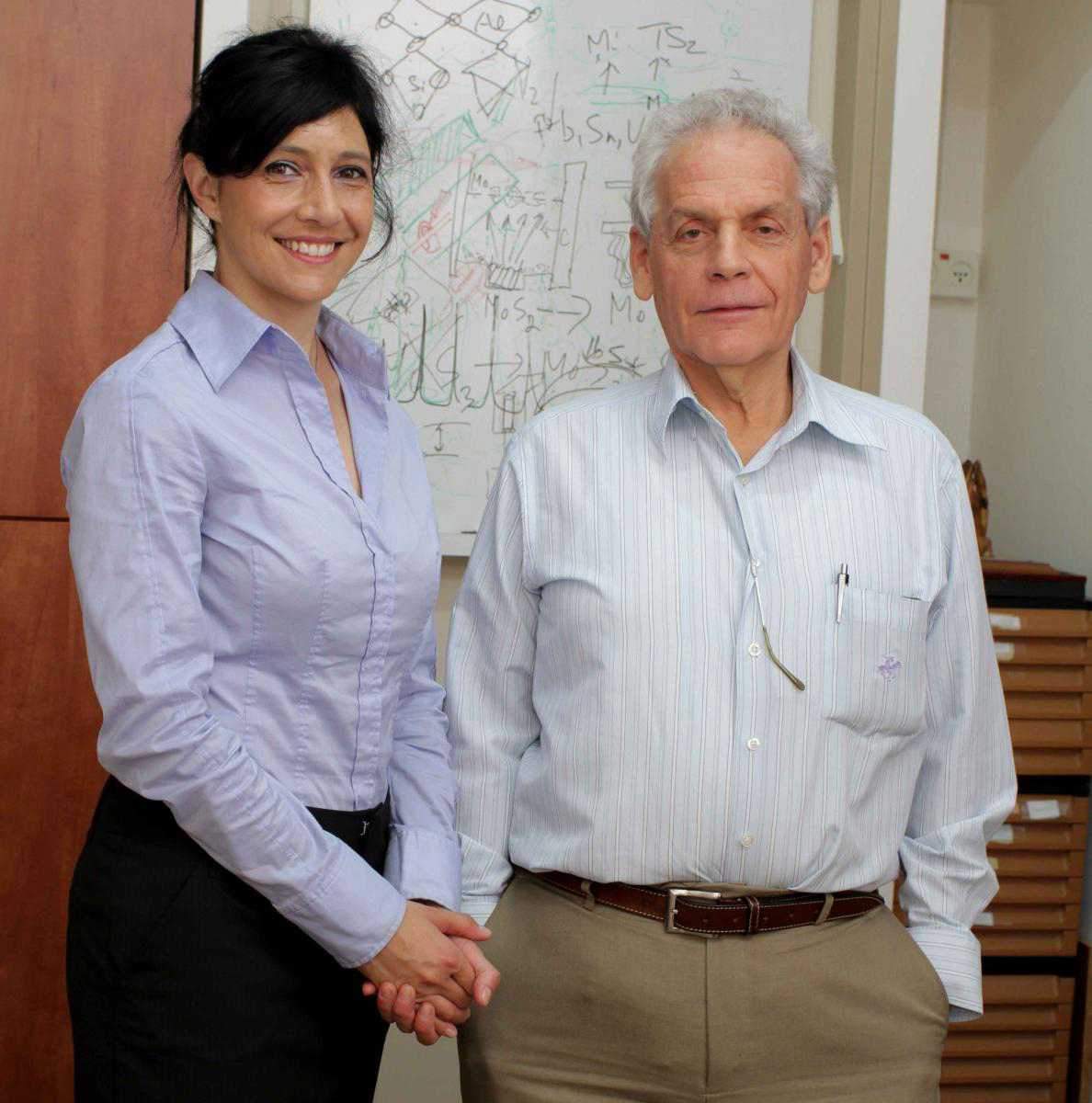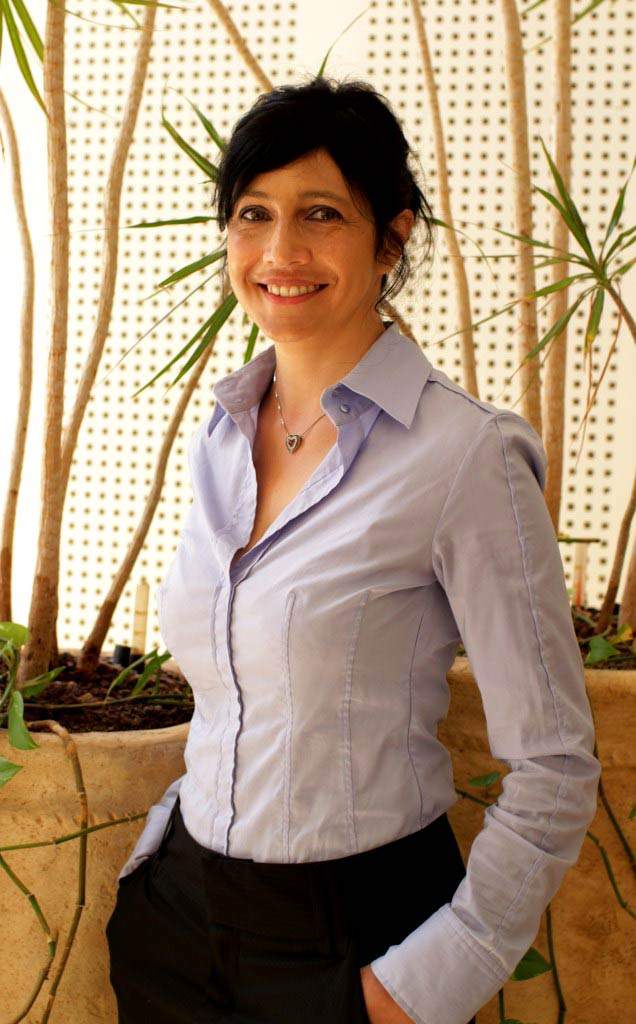“Imagine filling up your tank with metal powders and hydrogen. Or maybe lighting your house with batteries that were charged earlier in the day by wind and solar power. I believe this is the future of energy storage.” says Sabrina Sartori, a visiting professor who is working with
Prof. Reshef Tenne in the Materials and Interfaces Department of the Weizmann Institute. Their collaboration was made possible by a Feinberg Foundation visiting faculty program fellowship.
Among other things, Sartori, who is based in Norway, investigates materials that can be used for batteries that will be able to efficiently store energy produced during the daytime in solar cells. When she was considering the possibility of working with an Institute scientist through the visiting faculty program fellowship, the work of Tenne and his group caught her attention. Sartori was particularly interested in new methods he was developing for producing inorganic nanotubes, while Tenne saw that the collaboration could take the work of his group in new and fruitful directions.
Profs.
“The concept is to develop a stationary storage method to facilitate the integration of intermittent wind and solar power sources into the grid,” says Sartori. “For this application, lithium-ion batteries are not considered to be the best option, due to high costs and a shortage of lithium. Sodium, unlike lithium, is relatively cheap and readily available worldwide.” There is, however, a drawback: Existing sodium-based batteries operate at high temperatures (250°C and higher) and require sophisticated engineering that drives up costs considerably. Thus there is a huge incentive to develop new types of sodium-based batteries. One of the major scientific challenges in this area is the synthesis of high performance electrodes.
The negative electrode material currently utilized in these batteries is graphite, but researchers are searching for replacement materials that might improve performance. “With the help of Prof. Tenne and his PhD student Gal Radovsky, we are trying to synthesize a new family of inorganic nanotubes as innovative anodes,” explains Sartori. Tenne and his group are pioneers in the field of inorganic compounds that form fullerene-like nanostructures or nanotubes. One way they have been creating these inorganic nanostructures is via so-called “misfit layered” compounds. These consist of stacks of layers alternated with different chemical compositions and structures. Because the interactions between the layers are weak, sodium can be introduced between the layers, creating a sort of shuttle for transferring electricity.
The goal, says Sartori, is to create a nano-composite with extraordinarily high capacity and reasonably good charge-discharge cycles. “The synthesis is challenging, but we believe such inorganic nanostructures could offer many applications, particularly in the field of energy and electronics. This work could open a new field of research and strengthen the collaboration between Israel and Norway in the years to come, joining forces for a clean energy future,” she says.
Energy to Spare
In another research track, Sartori investigates nanoscale and porous materials that could be used to store hydrogen in future hydrogen-fueled vehicles or batteries. She moved from her native Italy to Norway in 2006, where she was recently appointed associate professor at the University of Oslo and University Graduate Center UNIK. There, she is taking part in an international effort to engineer special crystalline powders that are able to store hydrogen at greater densities than the ones obtained with current methods of compressed or liquid hydrogen storage. The goal, she says, is smaller fuel tanks, lower pressures and improved safety. Working on solid state hydrogen materials called hydrides, she is attempting to understand their structure, in particular the exact positions of the hydrogen atoms on the molecule – a challenge, as hydrogen is the lightest of the atoms. Sartori has a joint researcher position in the JEEP II nuclear reactor at the Norwegian Institute for Energy Technology, where she uses neutrons for her scattering experiments.
Sartori’s absorption into the Weizmann Institute has been a notable success. In addition to her work with Tenne’s group, she has mentored the postdoctoral women’s forum on the Weizmann campus – a biweekly group – giving a workshop on advancing one’s career and helping guide discussions on various topics. She received a prize given by the Energy & Environmental Science Journal during the annual conference of the Israel Chemical Society. In her spare time, she has been writing a chapter for an upcoming book on nuclear characterization techniques for the investigation of hydrogen in materials.
Prof. Reshef Tenne's research is supported by the Helen and Martin Kimmel Center for Nanoscale Science, which he heads; the Irving and Azelle Waltcher Endowed Research Fund in honor of Prof. Moshe Levy; and the European Research Council. Prof. Tenne is the incumbent of the Drake Family Professorial Chair in Nanotechnology.

